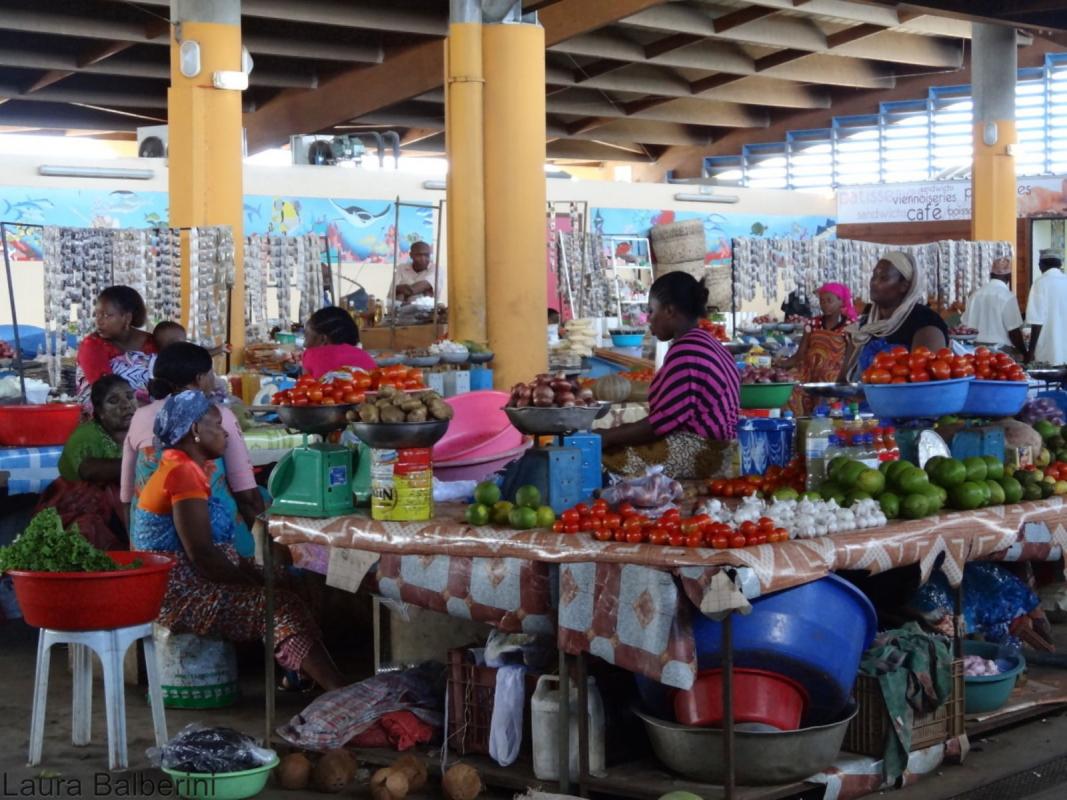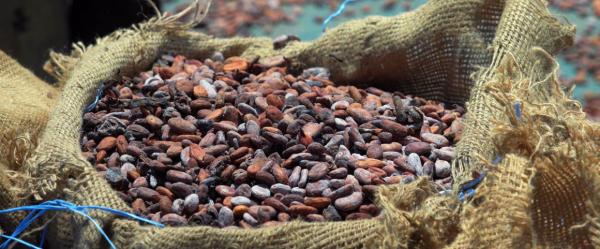Expert view 30 September 2025
- Home
- CIRAD news
- News
- Sandrine Dury FAO report food security and nutrition
Sandrine Dury: "We won't wipe out hunger and malnutrition with our current food systems"

The 2020 report on the state of food security and nutrition in the world (FAO, IFAD, WFP, UNICEF, WHO) is just out. What does it tell us?
Sandrine Dury: That we're on the wrong track when it comes to meeting sustainable development goal 2, "End hunger, achieve food security and improved nutrition and promote sustainable agriculture by 2030", set in 2015. Quite the opposite, in fact: since 2014, the number of malnourished people worldwide has risen steadily: 690 million people worldwide do not have enough to eat, 60 million more than in 2014. The report forecasts a figure of 840 million by 2030 if the trend is sustained. More generally, 2 billion people worldwide suffer from severe or moderate food insecurity, including more than a billion in Asia and 675 million in Africa.
What lies behind this situation?
S.D.: We have long known the reasons, and the report gives a reminder: armed conflict, which plagues the countries with the highest levels of food insecurity; climate variations, exacerbated by climate change; slower growth since the 2008 crisis; and scourges and pests such as the locust invasions seen from East Africa to India. Pre- and postharvest losses and food wastage are also in the spotlight. All these factors are compounded by the Covid-19 crisis, which could push between 80 and 130 million more people below the poverty line, hence into food insecurity.
How does the report suggest we get SDG2 back on track?
S.D.: Precisely by forging a link between income levels and the cost of a healthy diet. The report compares poverty thresholds and the cost of healthy food worldwide. It stresses that 3 billion people do not have the means to buy the foodstuffs that would provide them with a healthy, balanced diet. There is enough food worldwide, but that food, and good food in particular, is too expensive.
The report suggests cutting the cost of a healthy, balanced diet. How? Through profound changes in food systems to cut food costs and boost producer incomes. That isn't as easy as it sounds, obviously!
Food systems as we know them are not sustainable, as we explained in a recent report. Our current systems are having difficulty meeting the three main challenges set for them: feeding the entire world population, including the very poorest people, in a healthy, balanced way; protecting the environment (protecting biodiversity, mitigating climate change, etc); and responding to social concerns by creating decent jobs on all levels, particularly upstream and downstream of production operations. We need to transform them while keeping those three challenges in mind.
What exactly does cutting food costs while boosting producer incomes mean?
S.D.: In practical terms, it means increasing productivity (producing more with less) and production, to push down prices and ensure better consumer access to food. However, for farmer incomes to go up, prices must fall less than production goes up. According to the report, two main levers should make this possible: diversifying production and boosting fruit and vegetable productivity.
But production is not the only solution. Every other level in food systems also has a part to play. This is why the report mentions other levers, such as cutting pre- and postharvest losses. As long ago as 2014, FAO put losses in sub-Saharan Africa at between 30 and 40% for plantains, cassava and yams, and 40% for vegetable crops. Including nutrition in agricultural and commercial policy is another possibility. In addition to energy-rich foods such as rice and maize, this would also serve to promote other, locally produced, foods rich in vitamins and nutrients. Lastly, the report recommends strengthening social protection policies that make it easier for the poorest consumers to access healthy food.
So there are solutions! Why are they not being applied?
S.D.: The report doesn't talk about how to go about things, and it wasn't supposed to. However, to make real progress, we need to answer a range of questions. How do we boost productivity (new seeds, GMOs, increased input use, precision agriculture, agroecology, mechanization, etc)? How can we cut losses and wastage (transfers to markets, processing, storage facilities, etc)? How can we introduce social policies without making matters worse? Ever more questions arise as we start to "walk the walk" and try at the same time to respect environmental and social demands.
There is no magic bullet, and every case is unique. This is why CIRAD favours the territorial approaches for development that have been tested in some countries. Such approaches take account of both systemic and local aspects. CIRAD is working with FAO and the European Union to design simple diagnostic methods for food systems that draw very practical conclusions tailored to local situations. Our work on these issues shows that SMEs have a crucial role to play both upstream and downstream of production, notably in terms of processing and distribution. Lastly, CIRAD is working with food system stakeholders on the transformations required in future, above and beyond the agricultural sector and the rural/urban split.
This last point is vital: we can't do anything without the stakeholders concerned. The Covid crisis has prompted players in food systems to change their behaviour in response to lockdown and social distancing measures in different countries. What strategies have they adopted, in urban or in rural areas? Are those strategies temporary or long-term? Are they sustainable? This is what we are trying to understand, in order to work with our partners to support the transformation of food systems.
Interview by Elsa Bru




























